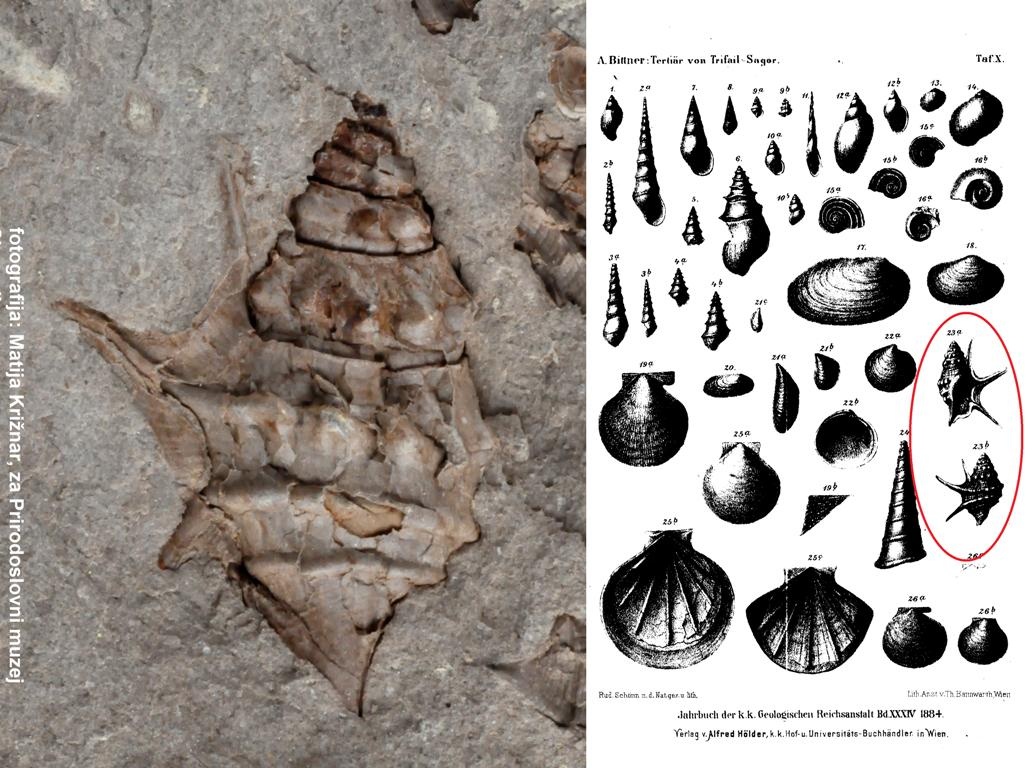When a thick layer of organic material was deposited about 25 million years ago in the area of the modern-day Zasavje region, it was still covered by a shallow lake. Episodic intrusions of sea water created the conditions suitable for this bay to be visited by other invertebrates and even fish, too. Presently, their remains are still preserved in thin shale marls and claystones. The most interesting invertebrates are probably the abundant remains of the “Trbovlje” pelican’s foot shell Aporrhais trifailensis. These shells are highly ornamented and have four long spikes. More ambiguity pertains to the nomenclature, as currently many people attribute this species to Aporrhais haeringensis, which had been described a few years earlier (hence an older synonym).


